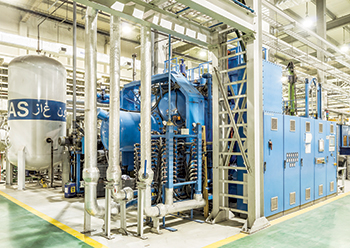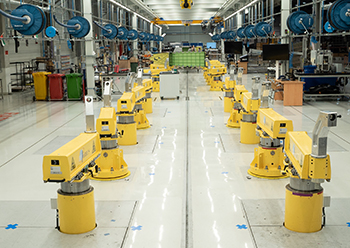
 Hozefa Saylawala
Hozefa Saylawala
Be it automation or machine learning, manufacturers in 2023 will earnestly turn to digital technologies to improve processes and efficiency, predicts Hozefa Saylawala, Middle East Director, Zebra technologies
Trend/prediction #1
Automation – though not new to manufacturing – will be adopted at a different scale and for a different reason than it has been in the past.
Manufacturers will take tangible steps to create intelligent factories – some with Industry 5.0 features – to empower connected front-line workers to drive decisions that enable operations to achieve sustainable just-in-time production and fulfillment. Rather than focusing on building a larger workforce, manufacturers will turn to technology and automation to augment human labour to improve processes and efficiency. Most automotive decision-makers, for example, plan to increase their spend in technology and the manufacturing infrastructure.
Trend/prediction #2
Digital transformation and IT/OT convergence will accelerate.
Spend on Internet of Things (IoT), intelligent Edge and cloud technologies as well as 5G will accelerate adoption of machine vision (MV), artificial intelligence and machine learning (AI/ML) for new use cases that drive Quality 4.0 and next-order productivity gains using robotics. These digital technologies offer significant opportunities to improve and even transform operations; a high degree of manual processes, new IoT technologies and sensors offer the opportunity to replace routine tasks and checks. The next wave of human-to-machine convergence will be key enablers that help manufacturers navigate complexity, price pressures and demand fluctuation. In fact, most industry decision-makers agree digital transformation is a strategic priority for them, and it’s essential for their organisations to have a data-driven culture.
Trend/prediction #3
AI/ML technologies will accelerate as manufacturers shift to more responsive and predictive operations that enable resilience and agility.
Manufacturers want to receive and react to digital signals throughout the supply chain so they can optimise and stay competitive. Seven-in-10 decision-makers surveyed in Zebra’s Automotive Vision Study rate the digitisation of operations and the supply chain to increase manufacturing speed as their top operational challenge, and they’re struggling to keep up with the pace of tech innovation. The AI in the manufacturing market is valued at $2.3 billion and is anticipated to be $16.3 billion by 2027, a CAGR growth of nearly 50 per cent. As many industries have already transformed with AI/ML, the time is ripe for manufacturers to embrace it and improve labor efficiency, equipment efficiency, and uptime.
Trend/prediction #4
Look for manufacturers to expand the scope of operations and supply chain visibility and monitoring across the value chain.
Many manufacturers are paying the price for quality challenges, and there is zero tolerance for health and safety issues. Across the industry spectrum, manufacturers will look to technologies that reduce risks to humans and reduce negative impacts to brand sentiments. In fact, according to Zebra’s 2021 Pharmaceutical Supply Chain Vision Study, the top five technologies that pharma manufacturers will implement are location technology (97 per cent), temperature monitors, sensors and temperature-sensitive labels (94 per cent), prescriptive analytics (93 per cent) and machine learning (89 per cent). And the top five benefits of technology are:
1. Ability to detect and respond to risk posed by counterfeit or substandard products
2. Keeping patients safe from compromised medications or other products
3. Improving team productivity and workflow conformity
4. Increasing product/asset visibility and utilisation
5. Enabling informed real-time decision-making and regulatory compliance
Trend/prediction #5
Manufacturers will look to RFID, ultra-wideband and Bluetooth Low Energy (BLE) to uncover process issues.
As they work to eliminate waste and address the location of vulnerabilities and points of failure – along with equipment, inventory and people, manufacturers will turn to location technologies. These expanded solution applications will make the business case and return on investment for location spending stronger. However, manufacturers will need to pay attention to the latest technology advancements. New specialised tags are being created every day, and efforts are being made to increase readability in dense areas or otherwise difficult environments.


